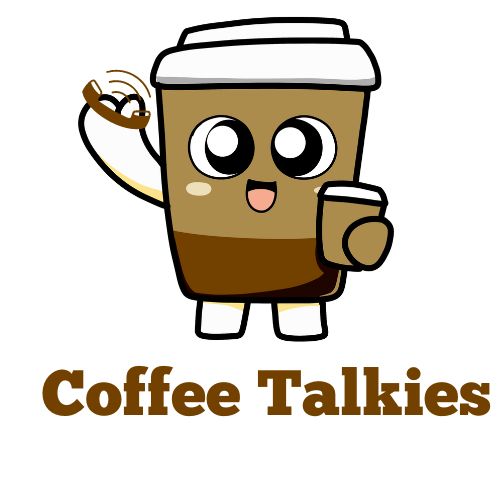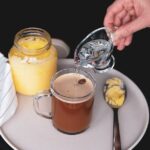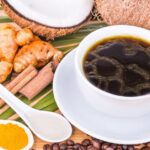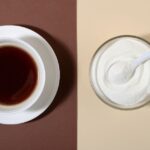How Much Caffeine Is Really in Espresso Beans? (Shocking Truth!)
Ever wondered why that tiny shot of espresso gives you such a big energy boost? It all comes down to caffeine—the natural stimulant found in coffee beans. But how much caffeine in espresso beans, and how does it compare to your regular cup of coffee?
Espresso beans aren’t a special type of bean—they’re just coffee beans roasted and ground specifically for espresso brewing. However, the way they’re prepared makes their caffeine content unique. Whether you’re an espresso lover, a coffee newbie, or just curious about caffeine, this guide will break it all down for you.
We’ll cover:
✅ The caffeine content in a single espresso bean vs. a brewed shot
✅ How espresso compares to drip coffee, cold brew, and other caffeine sources
✅ Factors that affect caffeine levels (bean type, roast, brewing method)
✅ Health considerations and how much is too much
By the end, you’ll know exactly how to enjoy your espresso—whether you sip it or even snack on the beans!
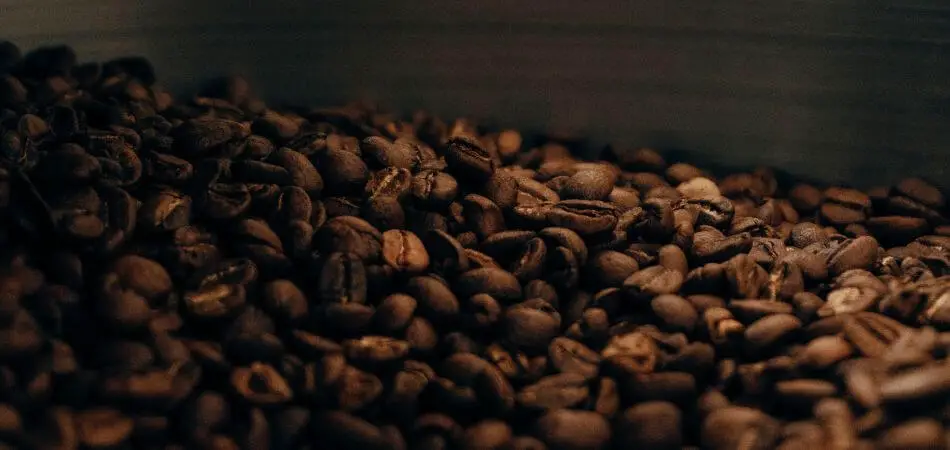
Espresso Beans vs. Regular Coffee Beans: What’s the Difference?
You might have heard the term “espresso beans,” but are they really different from regular coffee beans? The short answer: No, they’re the same beans—just prepared differently.
The Truth About Espresso Beans
Espresso beans are typically:
- Dark roasted (for a bolder, richer flavor)
- Finely ground (to allow high-pressure extraction)
- Often a blend of Arabica and Robusta (for crema and caffeine kick)
But here’s the thing: Any coffee bean can be used for espresso. The difference lies in the brewing method, not the bean itself.
Does Roast Level Affect Caffeine?
A common myth is that dark roast coffee has less caffeine than light roast. The truth?
- Caffeine per bean stays mostly the same—roasting burns off moisture and changes flavor, but caffeine is heat-stable.
- However, dark roasts are less dense, so if you measure by volume (scoops), you might use slightly fewer beans, leading to marginally less caffeine.
Brewing Method Matters Most
The real caffeine difference comes from how you brew:
| Brew Method | Caffeine per Serving |
|---|---|
| Espresso (1 oz) | ~63 mg |
| Drip Coffee (8 oz) | ~95 mg |
| Cold Brew (12 oz) | ~200 mg |
Key Takeaway: Espresso isn’t necessarily stronger—just more concentrated. A full cup of drip coffee actually has more total caffeine!
Caffeine in Espresso Beans: By the Bean vs. the Shot
Now, let’s get into the numbers. How much caffeine is in a single espresso bean, and how does that translate into your shot?
Caffeine in a Single Espresso Bean
On average:
- 1 raw Arabica bean = ~6 mg caffeine
- 1 raw Robusta bean = ~10 mg caffeine
But since we don’t eat raw beans, what happens when they’re roasted and brewed?
Caffeine Content in One Espresso Bean
On average, a single arabica espresso bean contains about 6–7 mg of caffeine, while a robusta bean (which is less common for espresso but sometimes used in blends) contains roughly 10–12 mg per bean.
However, this can vary based on factors like:
- Bean type (arabica vs. robusta)
- Roast level (darker roasts have slightly less caffeine by weight, but the difference is minimal)
- Bean size (larger beans may have slightly more caffeine)
Caffeine in a Shot of Espresso
A standard 1 oz (30 ml) espresso shot contains:
- ~63 mg caffeine (range: 50–85 mg)
- Double shot (2 oz) = ~125 mg
Why the variation?
- Bean type (Robusta has nearly double the caffeine of Arabica)
- Extraction time (longer pulls = slightly more caffeine)
- Dose size (more grams of coffee = more caffeine)
Espresso vs. Drip Coffee: Which Has More?
| Beverage | Serving Size | Caffeine Content |
|---|---|---|
| Espresso | 1 oz | ~63 mg |
| Drip Coffee | 8 oz | ~95 mg |
Surprise! While espresso tastes stronger, a full cup of drip coffee actually has more total caffeine. The difference? Concentration.
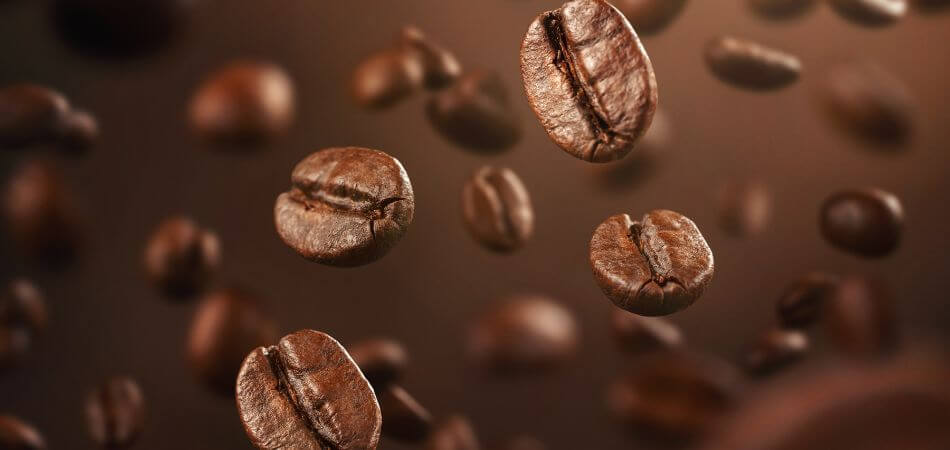
Factors That Affect Caffeine Levels in Espresso
Not all espresso drinks pack the same caffeine punch. Several key factors determine how much caffeine ends up in your cup:
1. Bean Type: Arabica vs. Robusta
The two main coffee species have very different caffeine contents:
| Coffee Type | Caffeine Content (per bean) | Flavor Profile |
|---|---|---|
| Arabica | ~6 mg | Sweeter, more complex |
| Robusta | ~10 mg | Stronger, more bitter |
Why it matters:
- Many espresso blends use Robusta for its extra caffeine and crema-producing qualities
- Pure Arabica espressos will be smoother but slightly less caffeinated
2. Roast Level: Does Dark = Stronger?
Here’s the truth about roasting and caffeine:
✅ Myth: Dark roasts have less caffeine
✅ Reality: The difference is minimal (5-10% at most)
What actually changes:
- Dark roasts lose more water weight, so you might use slightly more beans by volume
- Light roasts retain more original compounds but taste brighter
3. Brewing Variables That Matter Most
Grind Size:
- Finer grind = more surface area = more caffeine extracted
- But too fine can lead to over-extraction (bitter taste)
Brew Time:
- Standard shot: 25-30 seconds (~63 mg caffeine)
- Lungo (long pull): 45-60 seconds (~85 mg)
- Ristretto (short pull): 15-20 seconds (~50 mg)
Pro Tip: The “standard” 1 oz espresso shot uses about 7 grams of finely ground coffee.
Eating vs. Drinking: Do Espresso Beans Give More Caffeine?
Those chocolate-covered espresso beans aren’t just tasty – they’re a caffeine delivery system! But how does eating compare to drinking?
Caffeine Absorption Showdown
| Method | Caffeine Absorption | Speed of Effect |
|---|---|---|
| Drinking espresso | ~20 minutes | Fast (through stomach) |
| Eating beans | ~45 minutes | Slower (through digestion) |
Fun Fact: Chewing the beans releases caffeine directly into your mouth’s blood vessels for slightly faster absorption!
How Many Beans Are Safe to Eat?
A good rule of thumb:
- 5-10 beans = About one espresso shot’s worth
- Max 20-30 beans/day (to stay under 400mg caffeine limit)
Warning Signs You’ve Had Too Many:
- Jitters
- Rapid heartbeat
- Trouble sleeping
How Much Caffeine in Espresso Beans Chocolate
The caffeine content in chocolate-covered espresso beans depends on two main factors:
- The Coffee Bean – A single roasted espresso bean contains about 5–10 mg of caffeine, though this can vary based on the bean type and roast level.
- The Chocolate Coating – Dark chocolate contains a small amount of caffeine (about 12 mg per ounce), while milk chocolate has less (around 6 mg per ounce).
Estimated Caffeine per Serving
A typical serving of chocolate-covered espresso beans is about 1 ounce (28 grams), which usually contains 10–15 beans. Here’s a rough estimate:
| Component | Caffeine Content (per serving) |
|---|---|
| Espresso Beans (10 beans) | 50–100 mg |
| Dark Chocolate (1 oz) | ~12 mg |
| Total (approx.) | 62–112 mg |
For comparison:
- A standard 8-oz cup of coffee has 80–100 mg of caffeine.
- A shot of espresso (1 oz) has 63 mg of caffeine.

Health Considerations & Smart Caffeine Consumption
While caffeine offers benefits like improved focus, it’s important to consume wisely.
FDA Guidelines for Safe Intake
| Group | Recommended Max |
|---|---|
| Healthy adults | 400mg/day |
| Pregnant women | 200mg/day |
| Teens | 100mg/day |
Caffeine Content Comparison
| Drink/Food | Serving | Caffeine |
|---|---|---|
| Espresso shot | 1 oz | 63mg |
| Drip coffee | 8 oz | 95mg |
| Black tea | 8 oz | 50mg |
| Dark chocolate | 1 oz | 20mg |
Pro Tip: Space out your caffeine – your body can only process about 200mg every 4-5 hours.
Frequently Asked Questions
Q: Does a double shot have exactly double the caffeine?
A: Nearly! A standard double uses twice the coffee (14g vs 7g), yielding ~125mg caffeine.
Q: How much caffeine is in 1 espresso bean?
A: One espresso bean contains approximately 6 to 7 milligrams of caffeine. However, the exact amount can vary based on the bean type and roast level.
Q: Why does espresso taste stronger than drip coffee?
A: It’s about concentration – espresso has 63mg/oz vs drip’s 12mg/oz.
Q: How much caffeine is in a single espresso?
A: A single shot of espresso typically contains about 63 milligrams of caffeine. However, the exact amount can vary slightly based on the coffee beans and brewing method.
Q: Are espresso beans high in caffeine?
A: Espresso beans aren’t necessarily higher in caffeine—they’re just roasted and ground for espresso brewing. A single espresso shot has less caffeine than a regular coffee, but it’s more concentrated.
Conclusion: Sip (or Snack) Smartly!
Now you’re a true espresso caffeine expert! Remember:
- A single shot has about 63mg caffeine
- Robusta beans pack nearly double Arabica’s caffeine
- Eating beans gives caffeine too – about 6-10mg per bean
Your Turn: How do you prefer your espresso – as a drink or in chocolate-covered beans?
